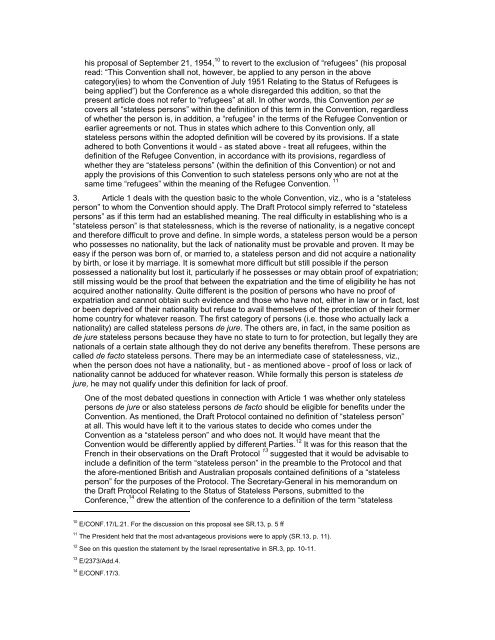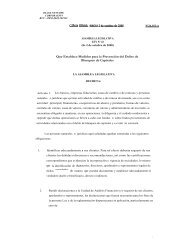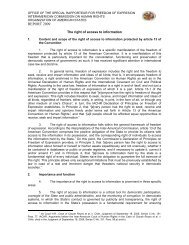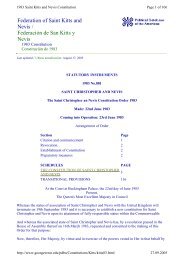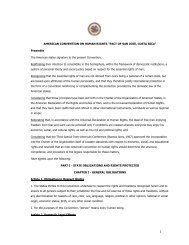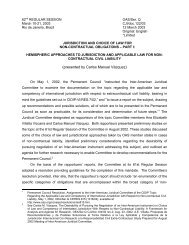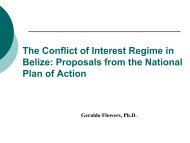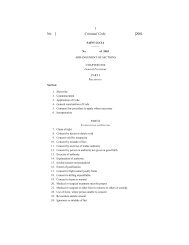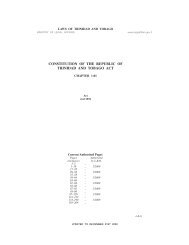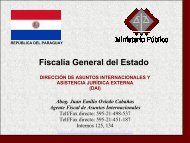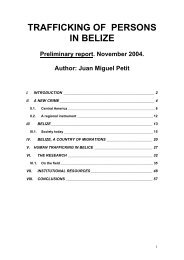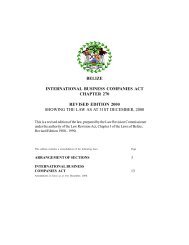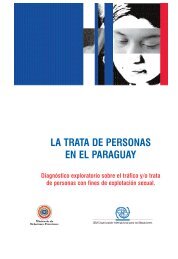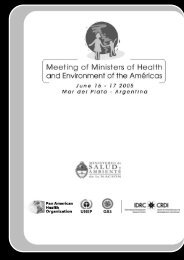CONVENTION RELATING TO THE STATUS OF ... - Refworld
CONVENTION RELATING TO THE STATUS OF ... - Refworld
CONVENTION RELATING TO THE STATUS OF ... - Refworld
You also want an ePaper? Increase the reach of your titles
YUMPU automatically turns print PDFs into web optimized ePapers that Google loves.
his proposal of September 21, 1954, 10 to revert to the exclusion of “refugees” (his proposal<br />
read: “This Convention shall not, however, be applied to any person in the above<br />
category(ies) to whom the Convention of July 1951 Relating to the Status of Refugees is<br />
being applied”) but the Conference as a whole disregarded this addition, so that the<br />
present article does not refer to “refugees” at all. In other words, this Convention per se<br />
covers all “stateless persons” within the definition of this term in the Convention, regardless<br />
of whether the person is, in addition, a “refugee” in the terms of the Refugee Convention or<br />
earlier agreements or not. Thus in states which adhere to this Convention only, all<br />
stateless persons within the adopted definition will be covered by its provisions. If a state<br />
adhered to both Conventions it would - as stated above - treat all refugees, within the<br />
definition of the Refugee Convention, in accordance with its provisions, regardless of<br />
whether they are “stateless persons” (within the definition of this Convention) or not and<br />
apply the provisions of this Convention to such stateless persons only who are not at the<br />
same time “refugees” within the meaning of the Refugee Convention. 11<br />
3. Article 1 deals with the question basic to the whole Convention, viz., who is a “stateless<br />
person” to whom the Convention should apply. The Draft Protocol simply referred to “stateless<br />
persons” as if this term had an established meaning. The real difficulty in establishing who is a<br />
“stateless person” is that statelessness, which is the reverse of nationality, is a negative concept<br />
and therefore difficult to prove and define. In simple words, a stateless person would be a person<br />
who possesses no nationality, but the lack of nationality must be provable and proven. It may be<br />
easy if the person was born of, or married to, a stateless person and did not acquire a nationality<br />
by birth, or lose it by marriage. It is somewhat more difficult but still possible if the person<br />
possessed a nationality but lost it, particularly if he possesses or may obtain proof of expatriation;<br />
still missing would be the proof that between the expatriation and the time of eligibility he has not<br />
acquired another nationality. Quite different is the position of persons who have no proof of<br />
expatriation and cannot obtain such evidence and those who have not, either in law or in fact, lost<br />
or been deprived of their nationality but refuse to avail themselves of the protection of their former<br />
home country for whatever reason. The first category of persons (i.e. those who actually lack a<br />
nationality) are called stateless persons de jure. The others are, in fact, in the same position as<br />
de jure stateless persons because they have no state to turn to for protection, but legally they are<br />
nationals of a certain state although they do not derive any benefits therefrom. These persons are<br />
called de facto stateless persons. There may be an intermediate case of statelessness, viz.,<br />
when the person does not have a nationality, but - as mentioned above - proof of loss or lack of<br />
nationality cannot be adduced for whatever reason. While formally this person is stateless de<br />
jure, he may not qualify under this definition for lack of proof.<br />
One of the most debated questions in connection with Article 1 was whether only stateless<br />
persons de jure or also stateless persons de facto should be eligible for benefits under the<br />
Convention. As mentioned, the Draft Protocol contained no definition of “stateless person”<br />
at all. This would have left it to the various states to decide who comes under the<br />
Convention as a “stateless person” and who does not. It would have meant that the<br />
Convention would be differently applied by different Parties. 12 It was for this reason that the<br />
French in their observations on the Draft Protocol 13 suggested that it would be advisable to<br />
include a definition of the term “stateless person” in the preamble to the Protocol and that<br />
the afore-mentioned British and Australian proposals contained definitions of a “stateless<br />
person” for the purposes of the Protocol. The Secretary-General in his memorandum on<br />
the Draft Protocol Relating to the Status of Stateless Persons, submitted to the<br />
Conference, 14 drew the attention of the conference to a definition of the term “stateless<br />
10 E/CONF.17/L.21. For the discussion on this proposal see SR.13, p. 5 ff<br />
11 The President held that the most advantageous provisions were to apply (SR.13, p. 11).<br />
12 See on this question the statement by the Israel representative in SR.3, pp. 10-11.<br />
13 E/2373/Add.4.<br />
14 E/CONF.17/3.


